Odds and Ends: July 2025
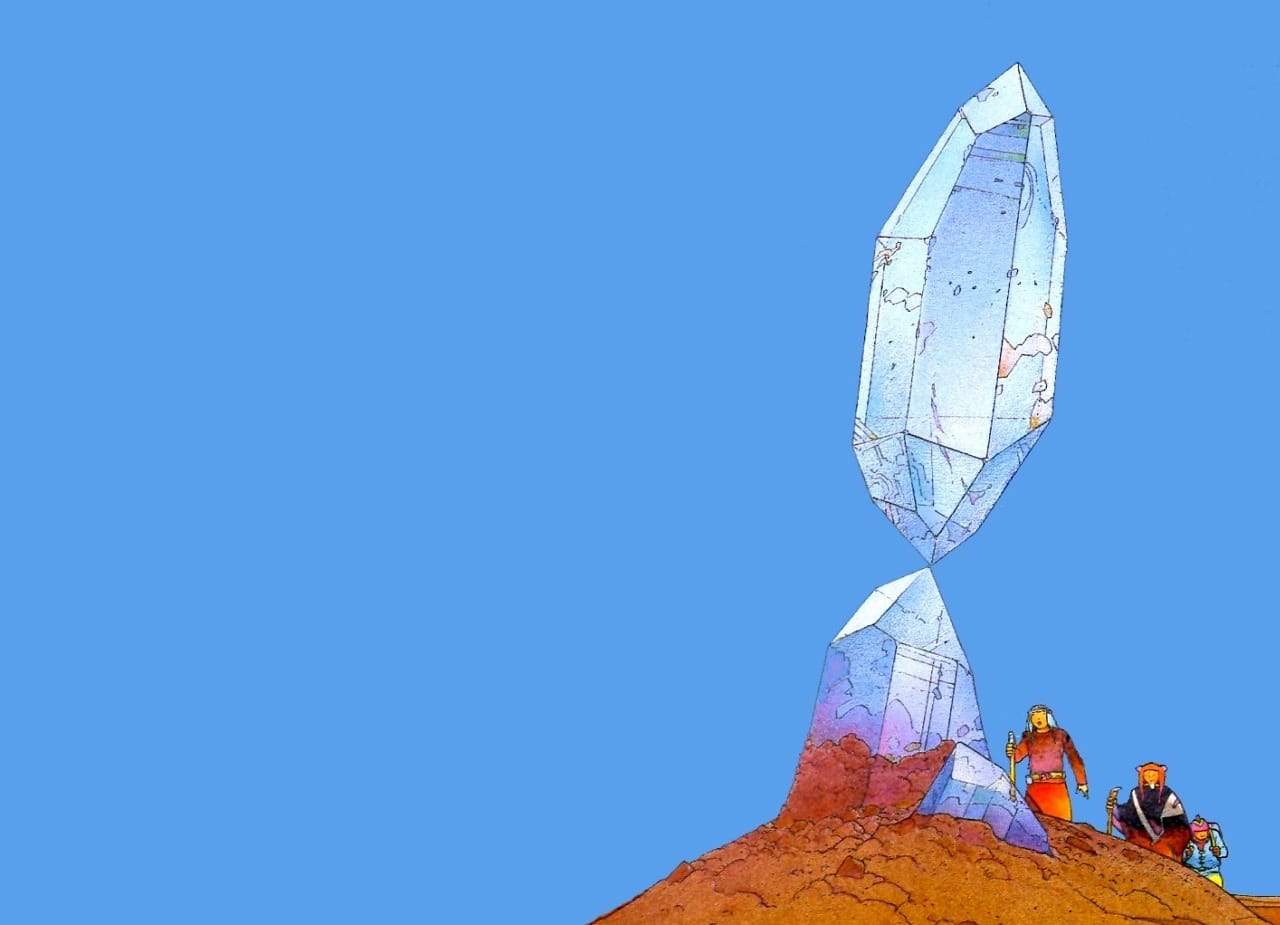
First things first: Check out this sick John Berkey illustration, an interior illustration in the Sept 1994 issue of Science Fiction Age. It's the perfect size for a phone lockscreen.
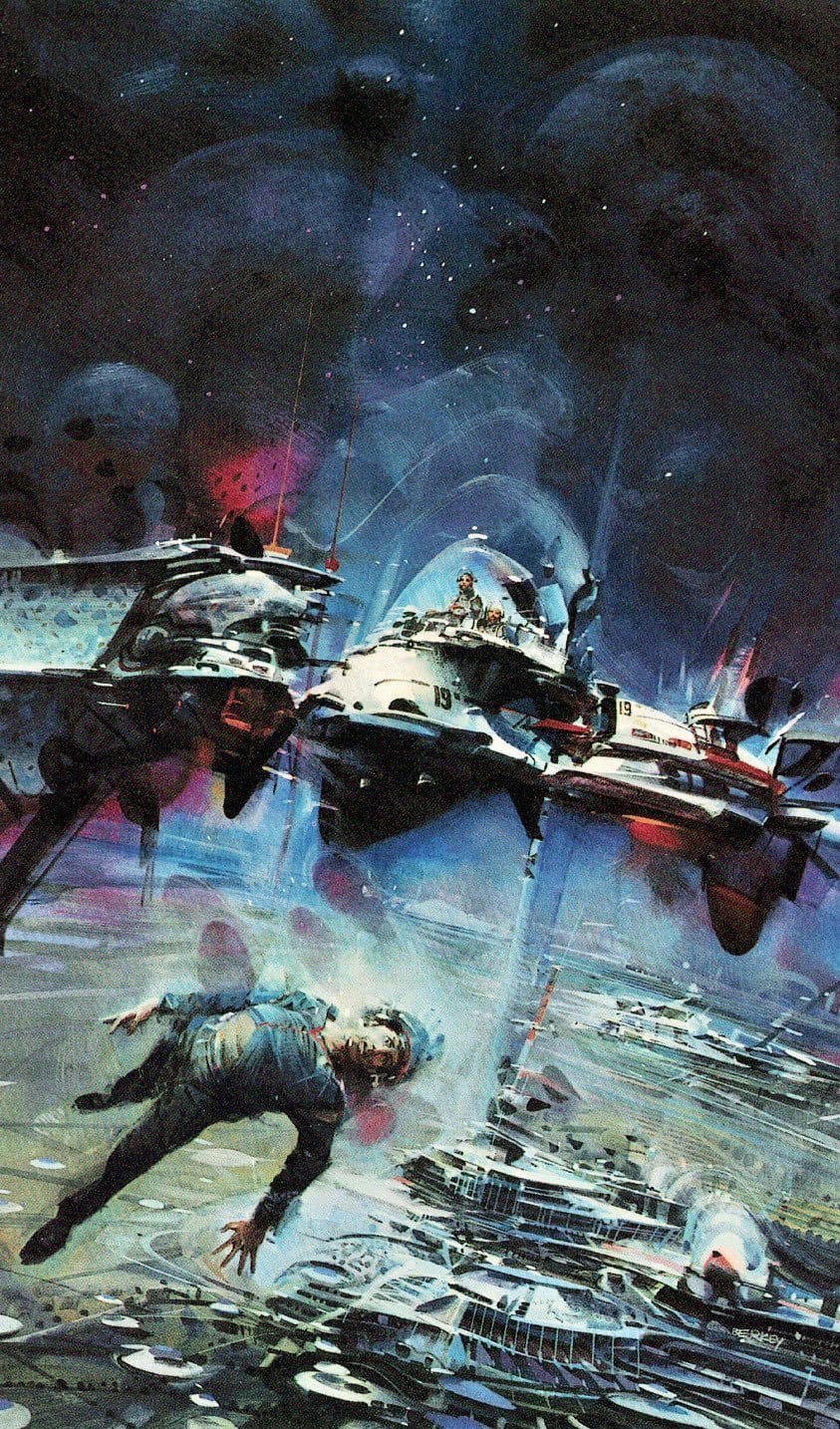
Here's one more artwork that I just really loved and wanted to highlight: Michael Booth’s 1985 cover art for Chad Oliver’s Shadows in the Sun.

There's something magical about deserted gas stations and UFOs. Very blue collar Americana, very Twin Peaks core. Here's the uncropped version.
A fun interview here with a Star Trek superfan who knows so much he actually was consulted for Picard. I'm actually shocked at how much this article feels like something I'd write for this blog! And this guy hosts his newsletter on Ghost, too. Such good taste.
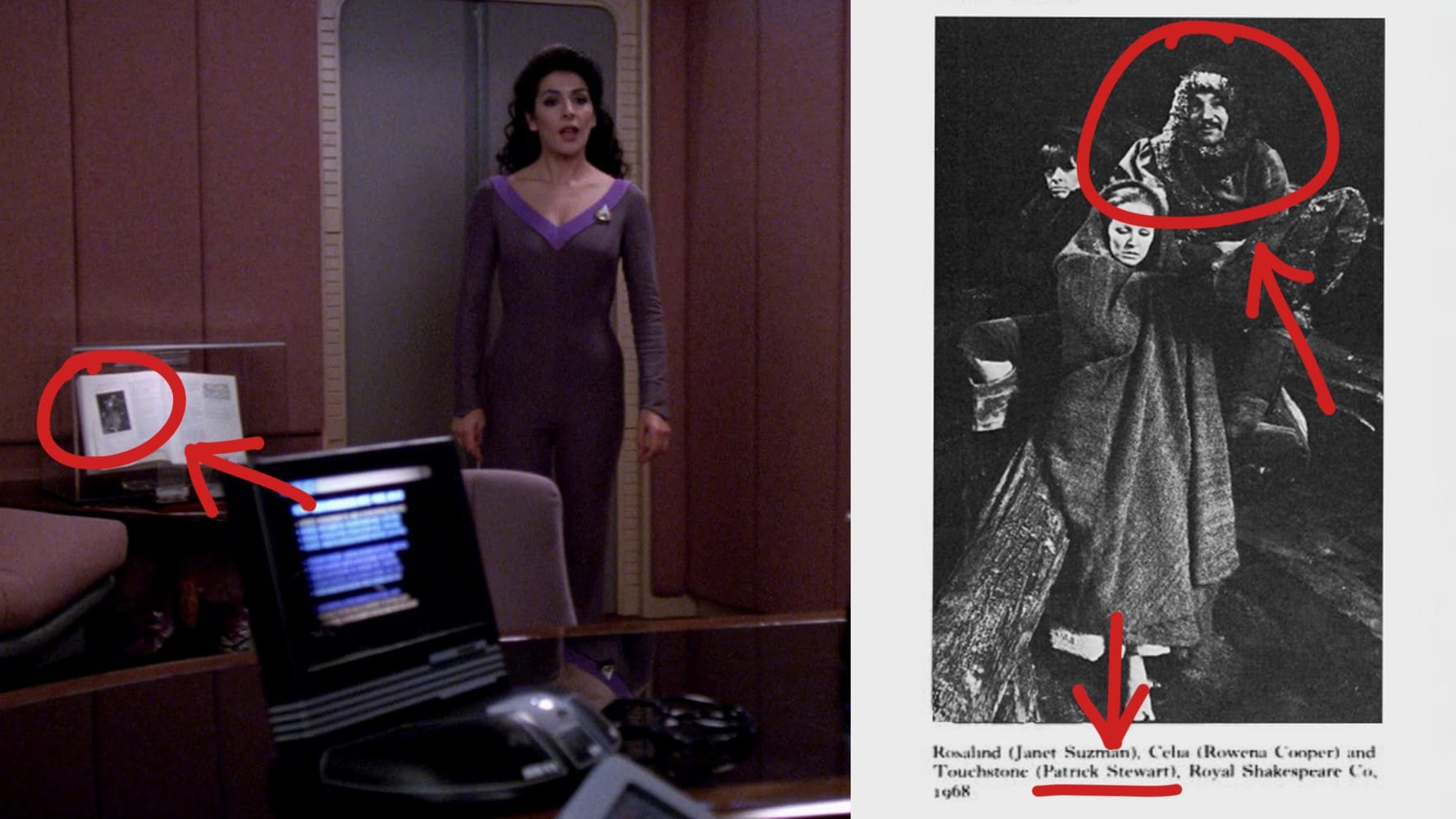
Proof that Patrick Stewart exists in the Star Trek universe
Ironic Sans
"Every time Jörg posts one of his “Star Trek Observations” on social media, I am fascinated almost as much by the observation as I am by the fact that he finds these strange connections to begin with. How does he know so much? Does he have a database in some sort of library computer access/retrieval system? Or does he just have an encyclopedic memory?"
Here's a quick profile on the Japanese artist Hirō Isono – definitely check it out if you like this blog, it felt like reading myself. Paying subscribers might remember I featured Isono in a past update.
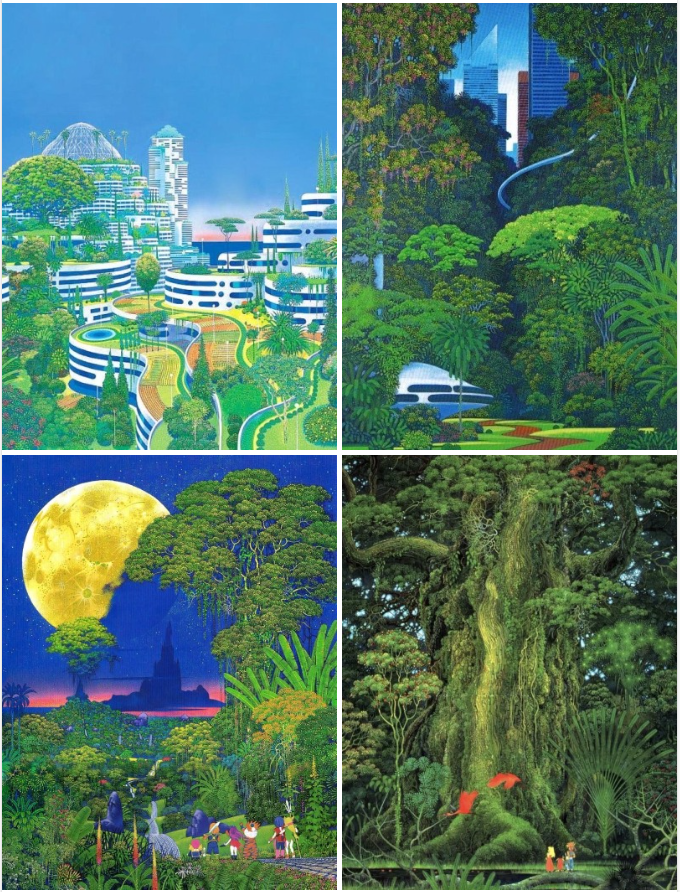
Hirō Isono: The Muse of Nature
Good Toggle
While Isono’s paintings often featured a signature color palette of blues and greens, he could highlight his pieces with warmer colors when necessary. He achieved this in several ways, whether it was a red hue lining the horizon at sunset, a canopy of blood-orange flowers or trees, golden moonlight enriching a midnight scene, or a fair share of animals in various colors and sizes.
As an art blogger who has over 33,000 Tumblr posts dating back to 2013, I can tell you that there's a lot of retro art online that is too small for my taste. Here are a couple ones featuring control panels - these are the largest versions available online!
Well, okay, there's a larger version of the first one online, but the colors are muddier, so I don't like it. Maybe what I'm trying to say here is that I'm too picky.
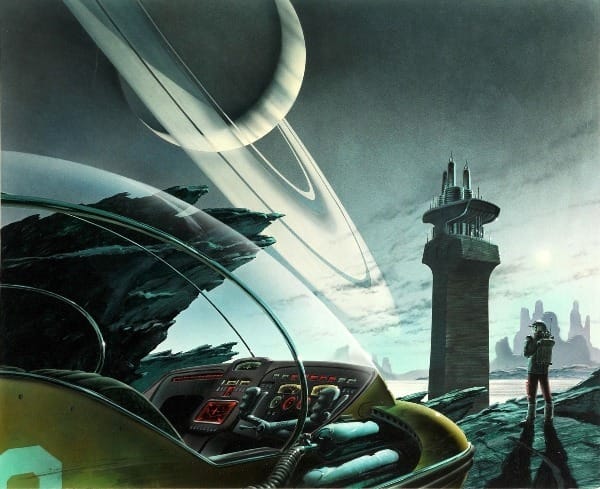
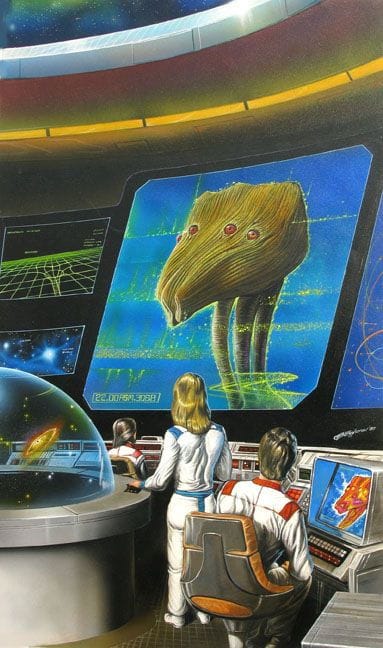
Here's a video essay about the Family Circus's weird quasi-rerun status that is probably the most interesting thing featuring that particular comic that I've ever experienced. Low bar, admittedly. The weird zombie existence of the Family Circus.
While I'm talking about art that isn't sci-fi, here's a profile of an art collective that runs a bizarre YouTube channel that uploads fake video game music mashup jokes to trick people. Life is beautiful.

Robert McCall's 1978 painting “Caesar’s Universe" was up for auction at Sotheby's recently. Here's the story behind it, straight from the auction page.
"After their innovative collaboration on Stanley Kubrick’s 2001: A Space Odyssey, Robert McCall and Douglas Trumbull sought to capitalize on the sci-fi mania sweeping the world to pitch 'Caesar’s Universe' to Caesar’s Palace casino in Las Vegas.
'Caesar’s Universe' set out to revolutionize dinner theater and entertainment by combining Cirque du Soleil -style acrobatics with science fiction visuals. The guests were meant to be on a trip to space aboard an intergalactic starship that was then hijacked and brought to an alien planet. Already grand in scale, the production required the use of several giant screens to project images out of the ornate viewports seen in this painting. These projected images were tightly choreographed with live performers, giant robots, and animals in alien costumes. Trumbull planned to accomplish a smooth interaction between the film and reality with the technology SHOWSCAN, which increased the frame rate of film to coincide with the viewers’ brainwave activity, thereby heightening emotional reaction beyond that of a conventional film.
Several elements of this painting could be visual references to other vintage visions of the future, such as the C-3PO-esque giant robot in the center of the stage and futuristic spacecraft resembling that of Close Encounters of the Third Kind. Brought altogether, this painting offers a colorful snapshot of the future, with enthusiastic technicians on gunner-like structures in the foreground monitoring lights and executing special effects necessary to transport the hundreds of guests to the alien worlds of Caesar’s Universe each evening. "
In the comment section of my Ocean Outposts issue, Kenneth James reminded me of a Dean Ellis illustration that I should have remembered to include. It was the August 1978 cover to Analog Science Fiction.

Beautiful stuff, and a perfect example of the type of outpost that I was interested in rounding up. If I'd remembered this one, it would have been among the first few images in the post. If any readers have wondered how I'm able to curate all the right pieces for my themed posts, there's your answer: I don't.
This very cool Brendan McCarthy illustration would also have been nice to include, but it'll fit better in a roundup of "third eye" illustrations, if I ever get around to one.
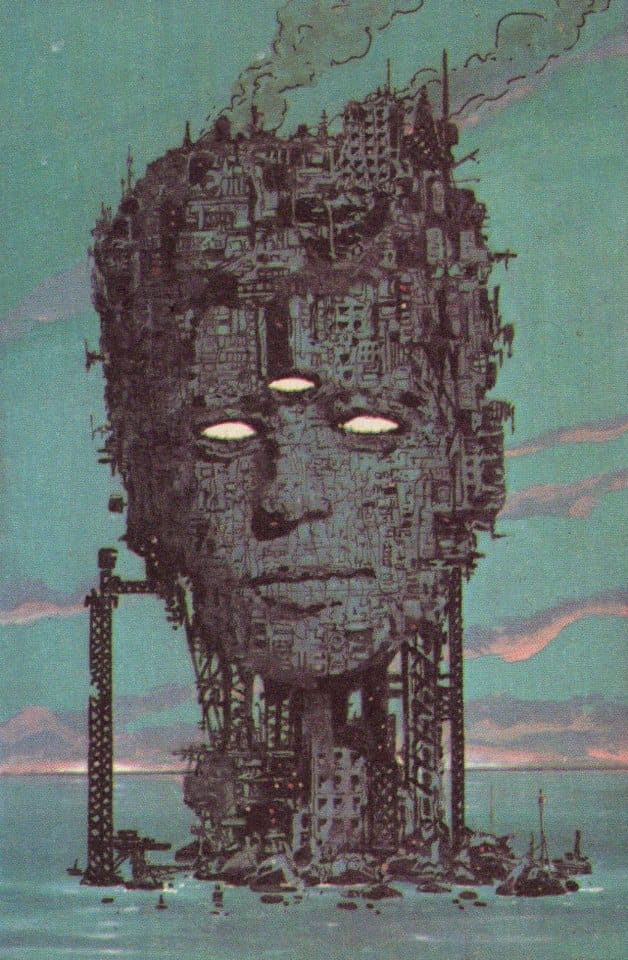
Friend of the blog Vintage RPG has been reviewing art books recently, including Ron Cobb's 1981 collection Colorvision. Here's a cool Cobb-designed Star Wars alien from the post.
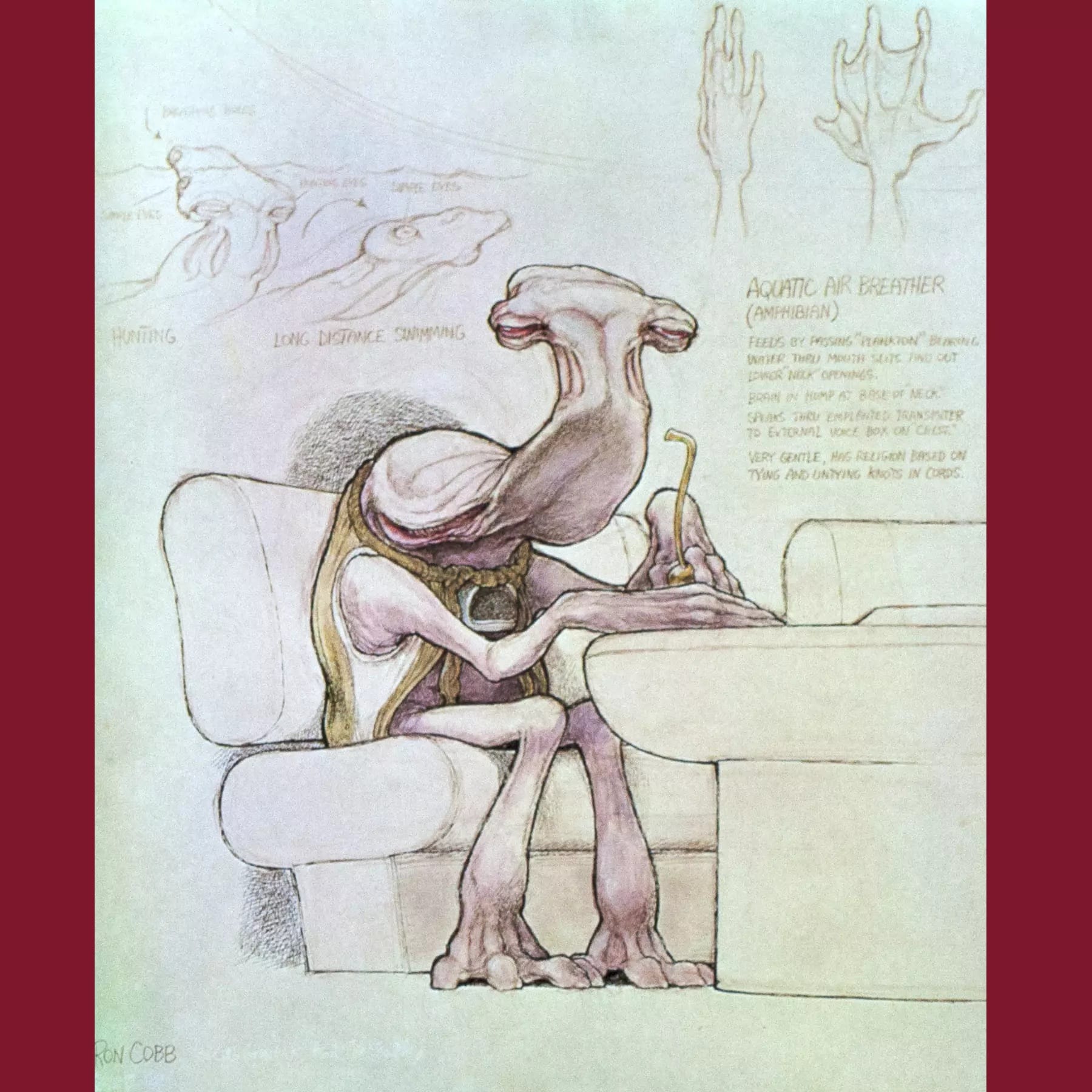
Another great post from John Coulthart's feuilleton, this time about the Gustave Doré-influenced jungles of 1930s adventure films.
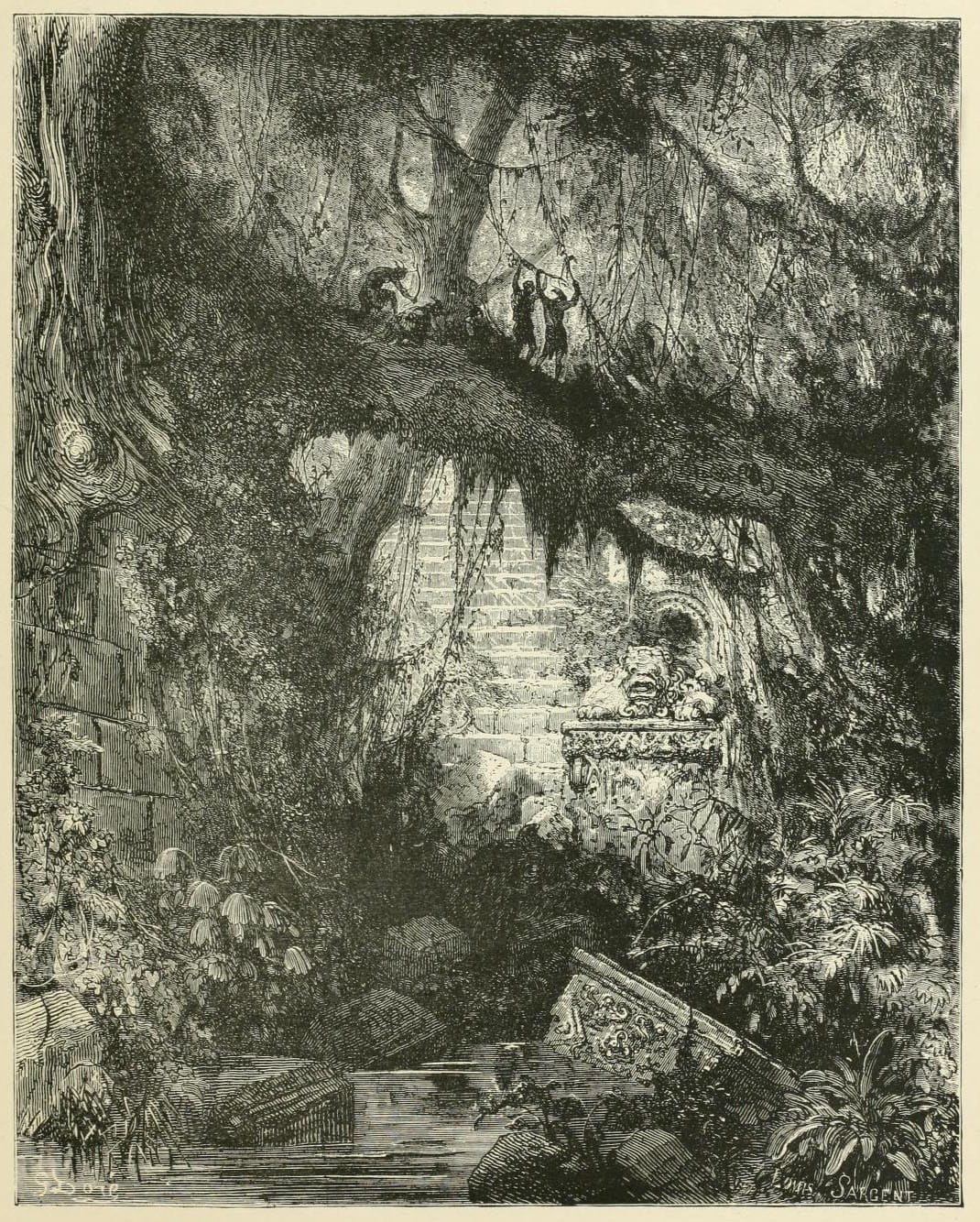
Speaking of cool jungle art, here's a pair of illustrations from a sub-subgenre that's just too niche for even me to turn into an entire post: Futuristic hunters in jungles.
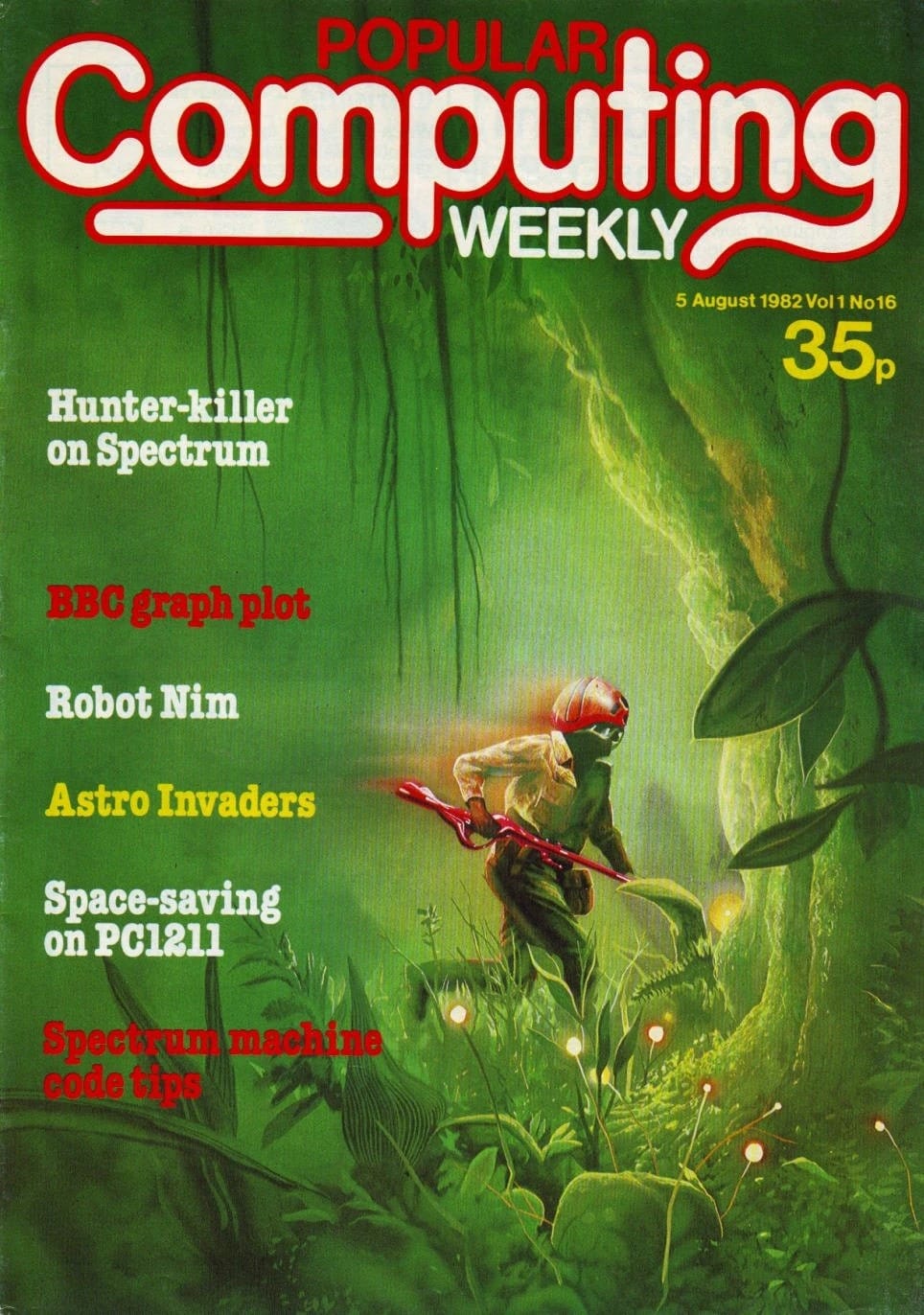
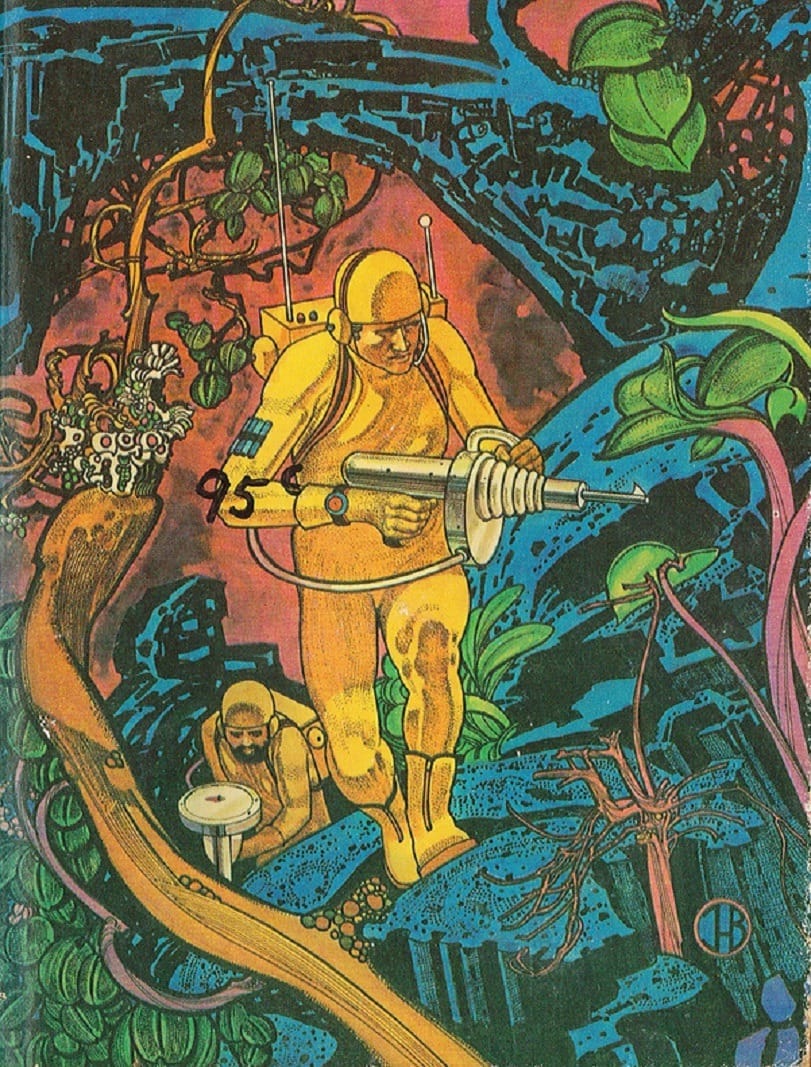
Podcast rec: I was listening to this pod about the benefits of re-experiencing past stuff you've enjoyed, and decided to recommend a few specific podcasts that have stuck in my memory since I first listened to them.
Directorpiece Theater episodes on the movie Speed and on Basic Instinct were both fascinating theories that you'll enjoy if you ever used to read the Cracked website.
Also, the entire The Turnaround with Jesse Thorn limited run is an unbeatable series of interviews with famous interviewers explaining their craft.
Here's a cool tool I just found online: Paste in a link to a Reddit thread, and it will scan it for song titles and automatically create a Spotify playlist for them.
So now you can get playlists on unique concepts like "What's a song most people have forgotten, but is still a total banger?" and "What 2000s song will always be a banger?" You can even create playlists that aren't about bangers, though I'm not sure why.
Granted, you're beholden to the opinion of randos on Reddit about which songs are "forgotten" or what have you. I never forgot about you, Baltimora's Tarzan Boy!
The only other downside is that they seem to be capped at about 31 songs or two hours long. If you want an 8-hour playlist of forgotten 80s bangers, you'll still need to manually create it like I did one time a few years ago.
Hey, this week marks the two-year anniversary of the release of my retro sci-fi art history coffee table book Worlds Beyond Time! To celebrate, I posted this cool little detail from the book: A whimsical floor buffer from the classic 1978 Angus McKie cover for Promised Land, by Brian M. Stableford.
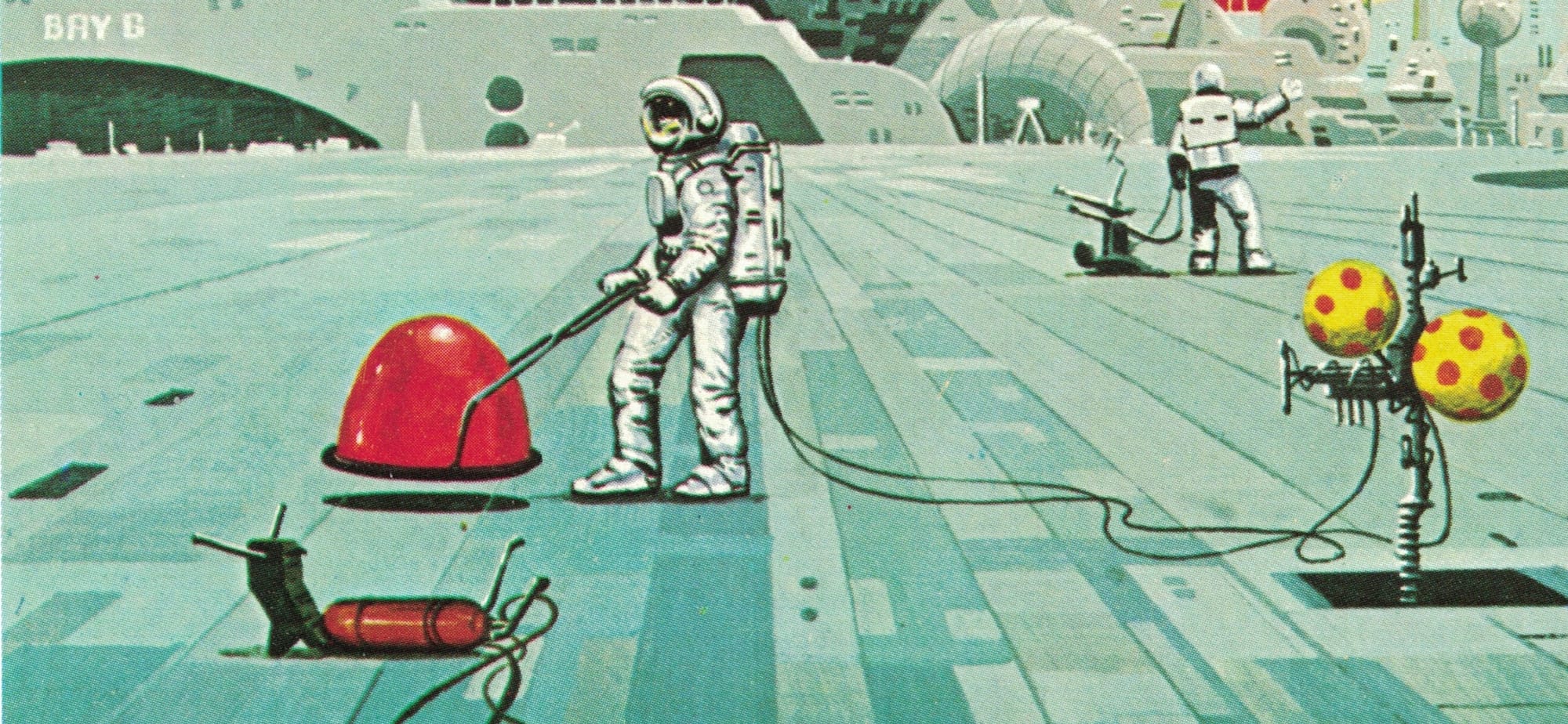
Of course, the whole image is pretty great as well:
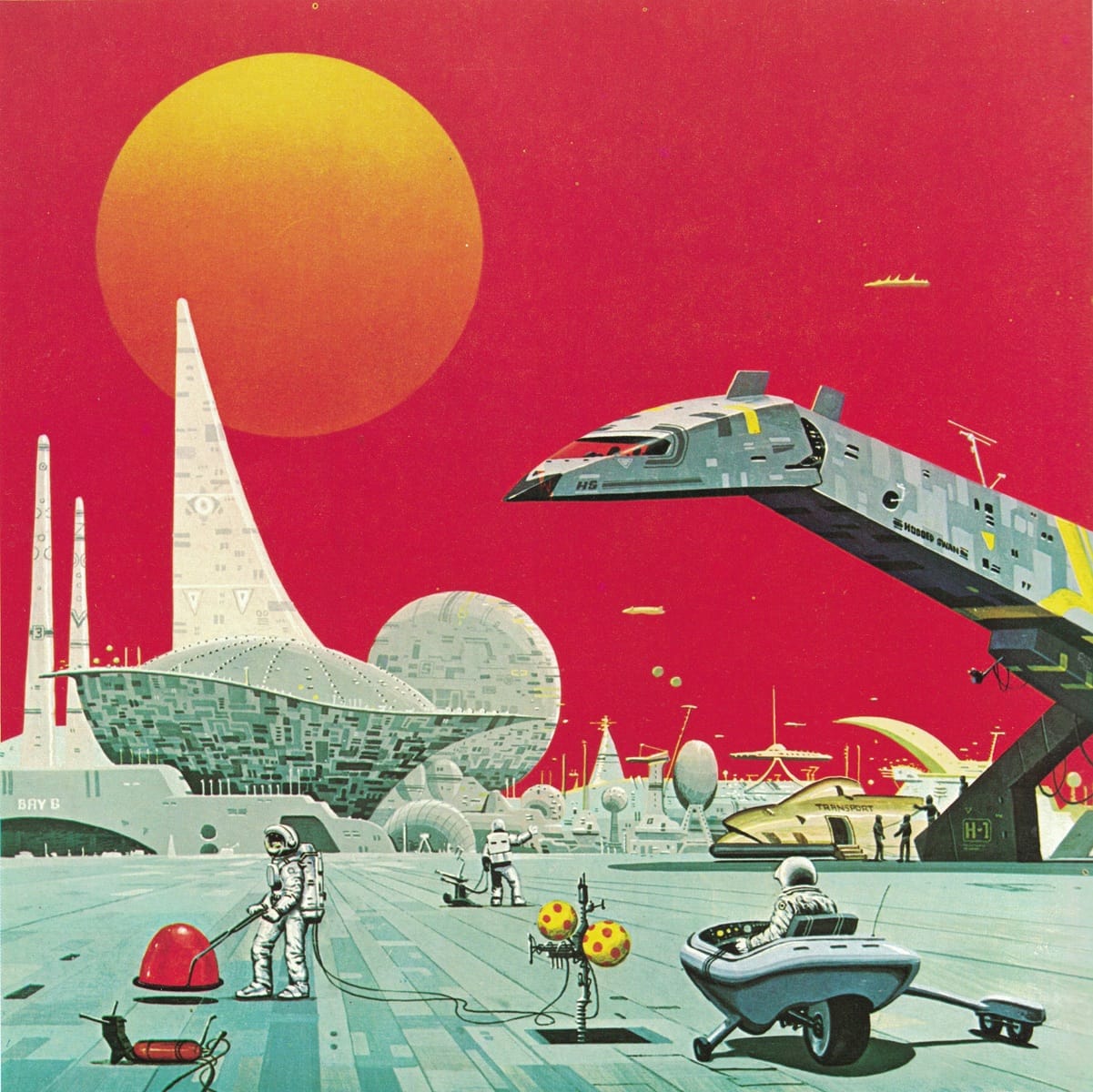
Music rec: Music economist and DJ Will Page has an amazing collection of mixtapes here, with a new one each year. The 2023 one is particularly good.
Next Time: Overgrown Ruins